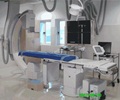Children who are obese or at the risk of obesity show early signs of heart diseases, a new study
Children who are obese or at the risk of obesity show early signs of heart diseases, a new study by researchers at the Washington University School of Medicine has revealed.
According to the Centers for Disease Control and Prevention (CDC), those who are overweight during childhood are also at an increased risk of obesity in adulthood. Such people are at greater risk for complications such as diabetes, high blood pressure and heart disease, because obesity increases total blood volume, which leads to extra stress on the heart."Based on this study, these subtle markers can help us predict who could be at risk for heart disease and heart attacks," said Angela Sharkey, M.D., associate professor of paediatrics at Washington University School of Medicine and a paediatric cardiologist at St. Louis Children's Hospital.
Sharkey and Steven M. Lorch, M.D., a former fellow at the School of Medicine now at University of Texas Health Science Center at Houston, studied data from 168 children ages 10 to 18 who had been referred to them for cardiac ultrasound with symptoms including heart murmur, chest pain, acid reflux or high blood cholesterol.
Based on CDC guidelines for body mass index for age (BMIA), 33 patients were found to have a BMIA as obese, or the 95th percentile or above for their age; 20 had a BMIA that classified them as at risk for obesity, or between the 85th and 94th percentile; and 115 were considered normal, or below the 85th percentile.
To analyse the hearts of the obese children and those at risk, Sharkey and Lorch used a new tissue Doppler imaging technique called vector velocity imaging which tracks the movement of the heart's muscular wall. Any changes in the rate of motion of heart muscle were averaged within each group and compared to the normal rate of motion.
"In the patients who are obese, the rate of motion of heart muscle changed," Sharkey said. "As a child's BMIA increases, we see alterations in both the relaxation and contraction phase of the heartbeat. Many of these changes that have been seen in adults were assumed to be from long-standing obesity, but it may be that these changes start much earlier in life than we thought,” he said.
Advertisement
"We may be able to determine whether we could intervene in the process, such as focusing the families on understanding the importance of regular exercise and dietary modifications for weight loss and prescribing statin drugs for high-blood cholesterol," she said.
Advertisement
"Even in teenagers, obesity leads to decreased myocardial performance and abnormal diastolic function," she said.
Further study is needed to determine how soon the changes in the heart set in after a child becomes obese and whether those changes are reversible with weight loss.
The study was published in the Winter 2007 issue of the Journal of Cardiometabolic Syndrome.
Source-ANI
LIN/V











